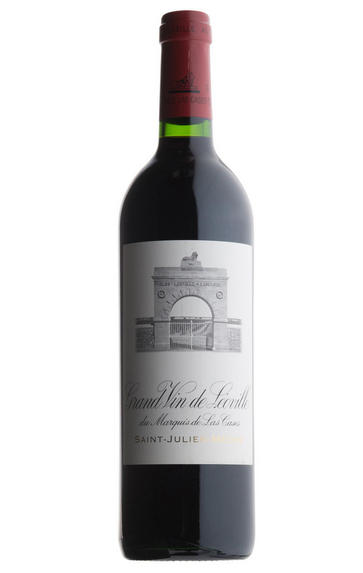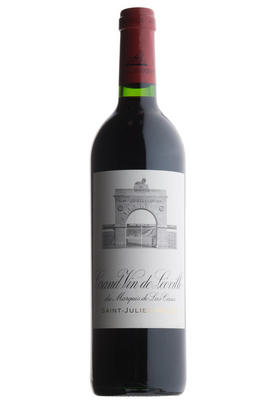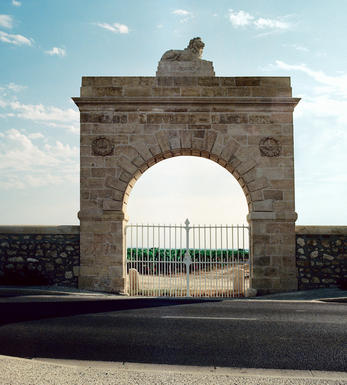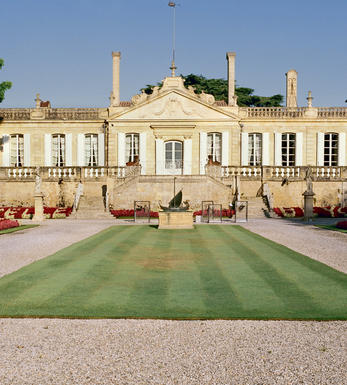
2020 Château Léoville Las Cases, St Julien, Bordeaux

Critics reviews
The 2020 Léoville Las-Cases, matured in 80% new oak and bottled in July, has retained that alluring Pauillac-like bouquet with disarming purity and intensity. There is a little more blue fruit joining the chorus line compared to its showing in barrel. Wonderful delineation. The palate is beautifully balanced with pliant, fine-boned tannins that frame the silky-smooth black fruit. Strawberry, cassis and spicy notes percolate through with aeration and flourish on the finish. This fulfils all its potential from barrel - a quite stunning Saint-Julien and a great Las-Cases.
Drink 2030 - 2070
Neal Martin, Vinous.com (February 2023)
The 2020 Léoville Las Cases has developed into a powerhouse. Then again, that is Las Cases. En primeur, I thought the 2020 was a bit shy, but its true personality has to emerge. Blackberry jam, gravel, spice, menthol, liquorice, espresso and plum all saturate the palate. Vivid and explosive, the 2020 is dizzyingly rich, with plenty of Las Cases tannins that will require patience. I am not sure when the 2020 will be ready to drink, but it won't be anytime soon. Las Cases is one of the wines of the vintage in 2020, that much is pretty clear.
Drink 2032 - 2070
Antonio Galloni, Vinous.com (February 2023)
50% new oak. The alcohol level is 1% less than 2018 and 0.5% less than in 2019, 3.65ph, 34hl/ha yield.
Richly textured from the first moment, pencil lead, cassis, black cherry, cigar box, liqourice and espresso, just waves of utterly gorgeous flavours. I highly recommend that if you can find a way to taste a young Las Cases, it is worth your time, because the bare bones of what it will become are there, and remain visible for a few years before the entire thing clamps shut for a decade or more, prising open only one chink at a time. There are edges of violet and smoked caramel here, revealing a generous Las Cases compared to many vintages, but it will close down like the rest do, surely as night follows day.
Drink 2032 - 2050
Jane Anson, JaneAnson.com (December 2022)
The 2020 Léoville Las Cases is a classic in the making, unwinding in the glass with aromas of cherries, cassis, loamy soil, violets and dark chocolate framed by a discreet touch of new oak. Full-bodied, broad and layered, it's rich and concentrated, with a deep core of fruit framed by sweet, powdery tannins and lively acids. Concluding with a long, resonant finish, it's built for the cellar.
One of the greatest and most consistent estates of the Médoc, Léoville Las Cases is in terrific form today. The core of the estate is the 50-hectare "Clos," surrounded by walls and bordering the Gironde to the immediate south of its neighbour, Latour. In the vineyards, where Cabernet Sauvignon rules, the team are experimenting with cover crops and biodynamic methods, and in the cellars and chai, winemaking remains very traditional.
Drink 2030 - 2060
William Kelley, Wine Advocate (April 2023)
Apparently, they are planning to drop Léoville from the name.
Tasted blind. Dark crimson. Lots of sweet fruit and sweet oak on the nose. And just a light leafy note. Dense, dry and refined in its tannic power, layered not massive. Long and refined even in embryo. Dark, savoury, sober on the palate, long. Lots of freshness in this powerful wine.
Drink 2035 - 2050
Julia Harding MW, JancisRobinson.com (February 2024)
A linear and very racy wine with super fine tannins that run the length of the wine. Superb. It’s full-bodied yet really focused and polished with length and intensity. Lots of currants and graphite. Very classy and fine. The new 1996.
Give it six to seven years to come around.
James Suckling, JamesSuckling.com (November 2023)
Perfumed touches on the nose, quite high toned, blackcurrant but almost liqueur with rose petal and candy floss nuances. On the point of ripeness, still tense, not hugely expansive in the mouth or particularly weighty but juicy with a really confident energy to it - vibrant and compelling. Tannins are perfectly integrated, so fine, this has a silky overall texture with a hint of grip coming towards the mid-palate. Driven and straight, not deviating from the core. Almost unfriendly, but you know this has been well made - it’s sleek, with sinewy muscles, just caged right now needing time to come around.
I love the precision of the elements, there’s such a sharp attention to detail with a liquorice, slate and pencil lead tang. The flavours need coaxing a little; this is a sleeping beauty waiting to awaken, but when it does it will be delicious because of the precision. A wonderful wine that makes you really think about how it’s going to evolve.
Drink 2029 - 2057
Georgina Hindle, Decanter.com (January 2023)
Another 2020 that's going to demand patience, the 2020 Château Léoville Las Cases is a Cabernet Sauvignon-dominated blend that includes 11% Cabernet Franc and 8% Merlot that was raised in 80% new French oak. It's a regal, medium to full-bodied, concentrated, flawlessly balanced 2020 with a pure core of cassis and darker currant fruits, a layered, seamless mouthfeel that carries substantial tannins, perfectly integrated oak, and subtle floral, mineral, and leafy herb nuances. Playing in the concentrated yet focused and structured style of the vintage, it's going to need a decade to hit the early phases of its prime drinking window and will have 50-75 years of longevity.
Drink 2035 - 2085
Jeb Dunnuck, JebDunnuck.com (March 2023)
Dense to smell, clearly gravelly, freshly black-fruit ripe; fairly full, but in no way heavy, fairly concentrated, but not strongly so, with a fresh defining acidity and a very fine-grained tannin, a lovely dense “midweight” impression, not a particularly “big” wine (not 1986, not 2010), just a beautiful, complete balance; moderately deep, freshly sweet, long across the palate, graceful, refined, complex, aromatic, satisfying, and with great length to finish. Gorgeous wine. Everything there at a slightly lower dynamic. Superb. And likely accessible relatively early for Las Cases, so fine are the tannins.
Drink 2030 - 2050
Michael Schuster, The World of Fine Wine (May 2021)
About this WINE

Chateau Leoville Las Cases
Château Léoville Las Cases is one of the largest and oldest classified growths in the Médoc. It is the largest of the 3 Léoville properties and now without doubt the leading estate in St-Julien.
Léoville Las Cases's 97 hectares of vineyards are superbly sited on gravelly-clay soils with the largest plot being surrounded by a stone wall and stretching between the village of St-Julien and Château Latour. The wine is a Cabernet Sauvignon dominated blend (65%), and is matured in oak barriques (70-80% new) for 18 months.
Léoville Las Cases produces arguably the most exotically perfumed wine in the Médoc and this can be partially attributed to the must being fermented at lower than average temperatures, which leads to its youthful aromatic richness being retained. On the palate it is powerful and concentrated and marvellously well-balanced.
Léoville Las Cases is a 2ème Cru Classé in name but produces 1er Cru Classé quality wines.

St Julien
St Julien is the smallest of the "Big Four" Médoc communes. Although, without any First Growths, St Julien is recognised to be the most consistent of the main communes, with several châteaux turning out impressive wines year after year.
St Julien itself is much more of a village than Pauillac and almost all of the notable properties lie to its south. Its most northerly château is Ch. Léoville Las Cases (whose vineyards actually adjoin those of Latour in Pauillac) but, further south, suitable vineyard land gives way to arable farming and livestock until the Margaux appellation is reached.
The soil is gravelly and finer than that of Pauillac, and without the iron content which gives Pauillac its stature. The homogeneous soils in the vineyards (which extend over a relatively small area of just over 700 hectares) give the commune a unified character.
The wines can be assessed as much by texture as flavour, and there is a sleek, wholesome character to the best. Elegance, harmony and perfect balance and weight, with hints of cassis and cedar, are what epitomise classic St Julien wines. At their very best they combine Margaux’s elegance and refinement with Pauillac’s power and substance.
Ch. Léoville Las Cases produces arguably the most sought-after St Julien, and in any reassessment of the 1855 Classification it would almost certainly warrant being elevated to First Growth status.
Recommended Châteaux: Ch. Léoville Las Cases, Ch.Léoville Barton, Ch Léoville Poyferré, Ch. Ducru-Beaucaillou, Ch Langoa Barton, Ch Gruaud Larose, Ch. Branaire-Ducru, Ch. Beychevelle

Cabernet Sauvignon Blend
Cabernet Sauvignon lends itself particularly well in blends with Merlot. This is actually the archetypal Bordeaux blend, though in different proportions in the sub-regions and sometimes topped up with Cabernet Franc, Malbec, and Petit Verdot.
In the Médoc and Graves the percentage of Cabernet Sauvignon in the blend can range from 95% (Mouton-Rothschild) to as low as 40%. It is particularly suited to the dry, warm, free- draining, gravel-rich soils and is responsible for the redolent cassis characteristics as well as the depth of colour, tannic structure and pronounced acidity of Médoc wines. However 100% Cabernet Sauvignon wines can be slightly hollow-tasting in the middle palate and Merlot with its generous, fleshy fruit flavours acts as a perfect foil by filling in this cavity.
In St-Emilion and Pomerol, the blends are Merlot dominated as Cabernet Sauvignon can struggle to ripen there - when it is included, it adds structure and body to the wine. Sassicaia is the most famous Bordeaux blend in Italy and has spawned many imitations, whereby the blend is now firmly established in the New World and particularly in California and Australia.


Buying options
Add to wishlist
Description
The 2020 Léoville Las-Cases, matured in 80% new oak and bottled in July, has retained that alluring Pauillac-like bouquet with disarming purity and intensity. There is a little more blue fruit joining the chorus line compared to its showing in barrel. Wonderful delineation. The palate is beautifully balanced with pliant, fine-boned tannins that frame the silky-smooth black fruit. Strawberry, cassis and spicy notes percolate through with aeration and flourish on the finish. This fulfils all its potential from barrel - a quite stunning Saint-Julien and a great Las-Cases.
Drink 2030 - 2070
Neal Martin, Vinous.com (February 2023)
wine at a glance
Delivery and quality guarantee